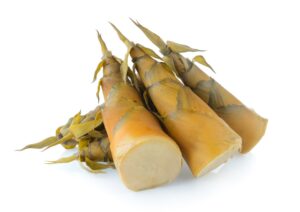There has been a growing demand for sustainable and eco-friendly wood products in recent years. As we become more aware of the impact of human activities on the environment, it’s important to consider the impact of the materials we use in our homes and businesses. In this article, we’ll explore the different types of sustainable and eco-friendly wood, how to identify them, their benefits, and how to dispose of treated wood properly.
What is sustainable and eco-friendly wood?
Sustainable and eco-friendly wood refers to wood harvested and produced to minimize its impact on the environment and ensure that the forest from which it was sourced is not depleted or destroyed. This means using responsible forestry practices that protect the environment, workers, and communities and avoid deforestation and habitat destruction. Sustainable and eco-friendly wood is a great choice for furniture, flooring, and other products because it is durable, beautiful, and supports responsible forestry practices.
Types of sustainable and eco-friendly wood
Several types of sustainable and eco-friendly wood are commonly used in furniture, flooring, and other products. Here are some of the most popular options:
1) Bamboo
Bamboo is a fast-growing, sustainable, and renewable resource that is great for furniture. It has a unique and modern look and is very durable. Bamboo is also resistant to moisture and insects, making it ideal for outdoor furniture and flooring.
2) Reclaimed wood
Using reclaimed wood for furniture is a great way to reduce waste and give new life to old materials. Reclaimed wood can come from various sources, such as old buildings, barns, or even old furniture. Reclaimed wood has a unique character and charm that can’t be replicated with new wood, and it’s a great way to add character and history to your home.
3) Mango wood
Mango wood is a fast-growing and sustainable hardwood that is gaining popularity in the furniture industry. It has a beautiful grain and natural color and is very durable. Mango wood is also easy to work with and can be carved and shaped into intricate designs.
4) Teak
Teak is a hardwood that is sustainably harvested from managed forests. It is very durable, resistant to rot and insects, and has a beautiful golden brown color. Teak is commonly used in outdoor furniture and decking because of its durability and resistance to moisture.
5) Maple
Maple is a sustainable hardwood that is commonly used in furniture. It has a light color, smooth, even grain, and is very durable. Maple is an excellent choice for modern and minimalist furniture designs.
How to identify sustainable and eco-friendly wood
Identifying sustainable and eco-friendly wood can be challenging, but there are several things to consider when choosing wood products. Here are some tips for identifying sustainable and eco-friendly wood:
1) Certification labels
The Forest Stewardship Council (FSC) and the Programme for the Endorsement of Forest Certification (PEFC) are two of the leading organizations that certify sustainably managed forests and the wood products that come from them. Look for products with the FSC or PEFC label.
2) Choosing fast-growing species
Some species of trees grow faster than others and can be harvested more frequently without depleting the forest. Bamboo is an example of a fast-growing and sustainable wood.
3) Avoiding tropical hardwoods
Many tropical hardwoods, such as teak and mahogany, are over-harvested and threatened with extinction. Look for alternatives such as oak, maple, or cherry.
4) Using reclaimed wood
Reclaimed wood is a great way to reduce waste and give new life to old materials. Look for products made from reclaimed wood, or consider using reclaimed wood to make your own furniture or DIY projects.
Benefits of sustainable and eco-friendly wood
1) Reducing environmental impact
By choosing sustainable and eco-friendly wood products, you can help reduce the impact of forestry on the environment. Sustainable forestry practices protect wildlife, maintain biodiversity, and prevent soil erosion and water pollution.
2) Preserving forests
Using sustainably harvested wood helps ensure that forests are not depleted or destroyed. This helps preserve the natural habitats of animals and plants, maintain biodiversity, and protect the earth’s climate by reducing carbon emissions.
3) Supporting responsible forestry practices
By supporting companies that use responsible forestry practices, you help promote sustainable forestry practices and encourage other companies to follow suit. This creates a market for sustainable and eco-friendly wood products, which helps protect the environment and promote responsible forestry practices.
Disadvantages of non-eco-friendly wood
While non-eco-friendly wood products can be cheaper and more widely available than sustainable and eco-friendly wood products, they also have several disadvantages. The chemicals used in the treatment process can be harmful to human health and the environment, and the production of non-eco-friendly wood products can contribute to deforestation and habitat destruction. Choosing sustainable and eco-friendly wood products is a great way to reduce the negative impact of wood production on the environment and promote responsible forestry practices.
How to dispose of treated wood properly
Treated wood contains chemicals that can harm human health and the environment if not handled and disposed of properly. Here are some tips for disposing of treated wood properly:
1) Avoid burning treated wood
Burning treated wood releases harmful chemicals into the air, which can be dangerous to human health and the environment. Avoid using treated wood as firewood or in fire pits.
2) Do not dispose of treated wood in landfills
Treated wood contains chemicals that can leach into the soil and groundwater, potentially contaminating the environment. Many landfills do not accept treated wood or have restrictions on how it can be disposed of.
3) Recycle or repurpose treated wood
Treated wood can be recycled or repurposed into other products, such as mulch, animal bedding, or fuel. Check with your local waste management facility or recycling center to see if they accept treated wood.
4) Use a hazardous waste disposal service
If you have a large amount of treated wood that you need to dispose of, consider using a hazardous waste disposal service. These services can safely dispose of treated wood and other hazardous materials.
Final Thoughts
Sustainable and eco-friendly wood products are a great choice for anyone who wants to reduce their environmental impact and support responsible forestry practices. By choosing sustainable and eco-friendly wood products, you can help preserve forests, reduce your environmental impact, and support responsible forestry practices. Following the tips in this article, you can make informed choices about the wood products you use in your home and business and help create a better, more sustainable future for all.








Reader Interactions